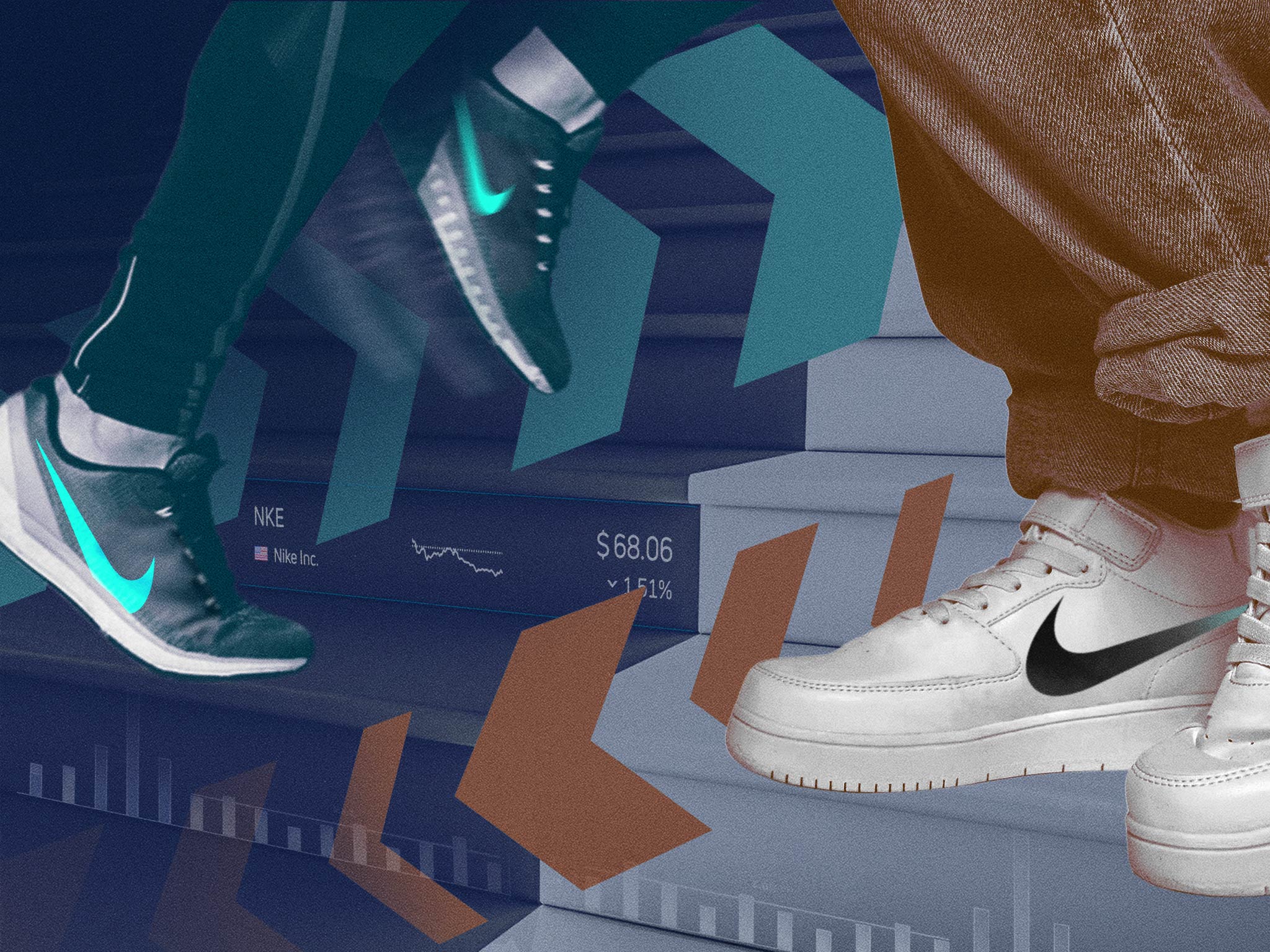Despite sales rising in some divisions, such as North America, Nike (NYSE: NKE) still faces an uphill battle as tariffs impact its profit margin and consumers have slowed their spending.
The sneaker and apparel company retailer reported that its revenue increased by 1% to $11.72 billion, after it previously estimated that it would decline by a mid-single digit percentage in the period. Nike reported net income of $727 million, or 49 cents per share, compared with earnings of $1.05 billion, or 70 cents per share, in the year-ago quarter.
But Nike’s profits declined by 31% while its gross margin dropped 3.2 percentage points to 42.2% during the quarter. Nike’s inventory of clothing and athletic shoes decreased by 2%, but not fast enough. Lowering the company’s inventory also means slashing prices, which also impacts its profit margin.
CEO Elliott Hill, who began his position nearly a year ago on October 14, continues to deal with challenges as the tariffs imposed on its products by the current administration will cost the company $1.5 billion and hit its gross margin by 1.2 percentage points in its current fiscal year 2026.
But Nike has improved in three core divisions – running, wholesale, and North America. Wholesale revenue increased by 7% to about $6.8 billion, while North America’s sales rose by 4% to $5.02 billion, beating analysts’ estimate of $4.55 billion.
More headwinds in the future
Nike still needs to improve as its products have lost popularity in China, its direct business of retailers and online sales, and its Converse brand. Sales in China, a key market, declined by 9% while direct sales dropped by 4% and sales of Converse dipped by 27%.
“Greater China, as I mentioned on the last call, is facing structural challenges in the marketplace,” Hill told analysts on a conference call. “Seasonal sell-through continues to underperform. Our plans require larger investments to keep the marketplace clean.”
Nike’s next few quarters will run into more hurdles, as the company estimates that its direct business will not return to growth in fiscal 2026.
New CEO’s plans
Since Hill began serving as CEO, he has been focusing on sports, working on its partnerships with wholesalers and product innovation. He has been brutally frank that the company’s comeback will not be a fast journey, and for investors to not count on holiday sales this year. Sales from early September to early December are expected to decline by a low single digit percentage, the company said.
“Nike’s journey back to greatness has only just begun,” Hill said on September 30. “Progress won’t be linear, but the direction is.”
Shares of the stock started to ramp back up six months ago with an increase of 13.7%.
Hill’s plan also includes reaching more female customers to ramp up sales. Nike recently partnered with Kim Kardashian’s shapewear brand Skims in an effort to attract the attention of more women. Nike’s lifestyle merchandise remains a critical part of its strategy to increase growth, since it appeals to a larger number of potential customers.
He has also changed its corporate structure to go back to teams of employees organized by sports instead of men’s women’s and kids. Hill had said Nike is going back into its previous division of being “sport-obsessed teams” resulting in “a relentless flow of innovative product across all three of the brands.”
“Collectively, we’ll have a better coordinated attack with each brand forming a distinct identity and delivering a clear attention to serve different consumers,” he said. “In the marketplace, organizing by sport, gives us a much clearer point of view.”
Nike’s positive outlook
One factor impacting Nike’s sales is that 16% of its U.S. footwear comes from China, which has been subjected to sky-high tariffs. But Nike has said it has plans to lower that inventory to below 10% by the end of fiscal 2026.
Nike’s sales in China will return to double digits in fiscal 2027 and the “region has high potential,” wrote David Swartz, a senior equity analyst for Morningstar.
The outlook for Nike remains strong since its “advantages in products, marketing, and connections to athletics will allow it to win back share and reduce discounting in fiscal 2026,” he wrote. “We think investors are overlooking its potential to build to midteen operating margins through product releases, new marketing, and price hikes.”
Retailers such as Dick’s Sporting Goods (NYSE: DKS) and Foot Locker are also “reacting positively to Nike’s new running shoe lineup,” enabling the company to “reclaim lost selling space in this and other performance categories through innovation and new marketing,” Swartz said.
Nike’s sales could rise in the next few quarters with the CEO’s strategy and focus on sports, its new shoe lineup, and the reduction of its older inventory.




Comments